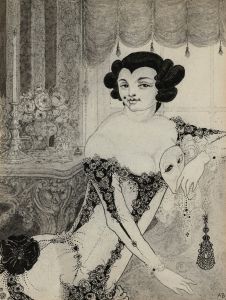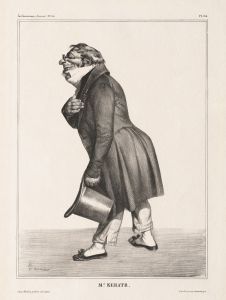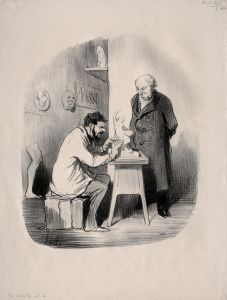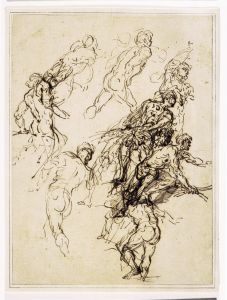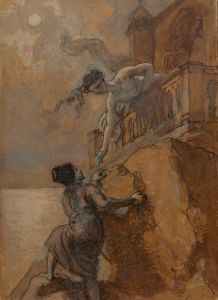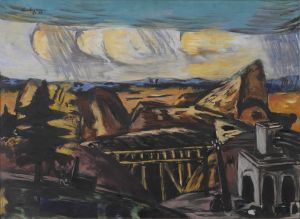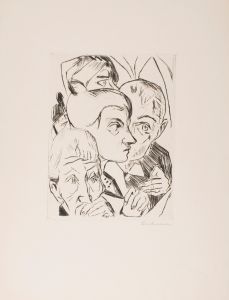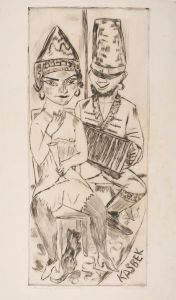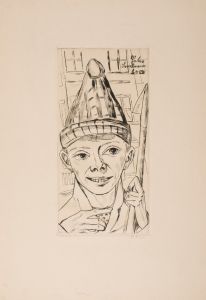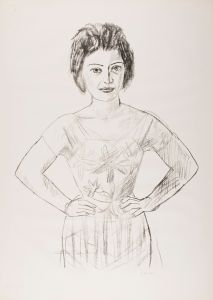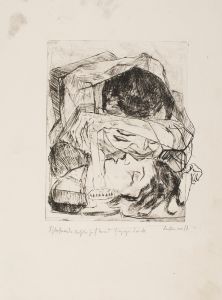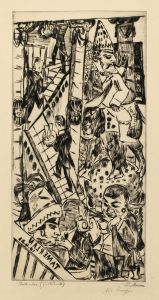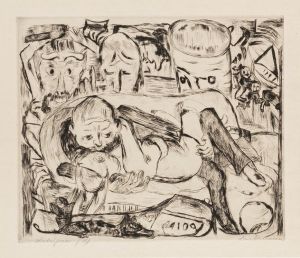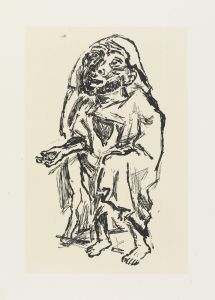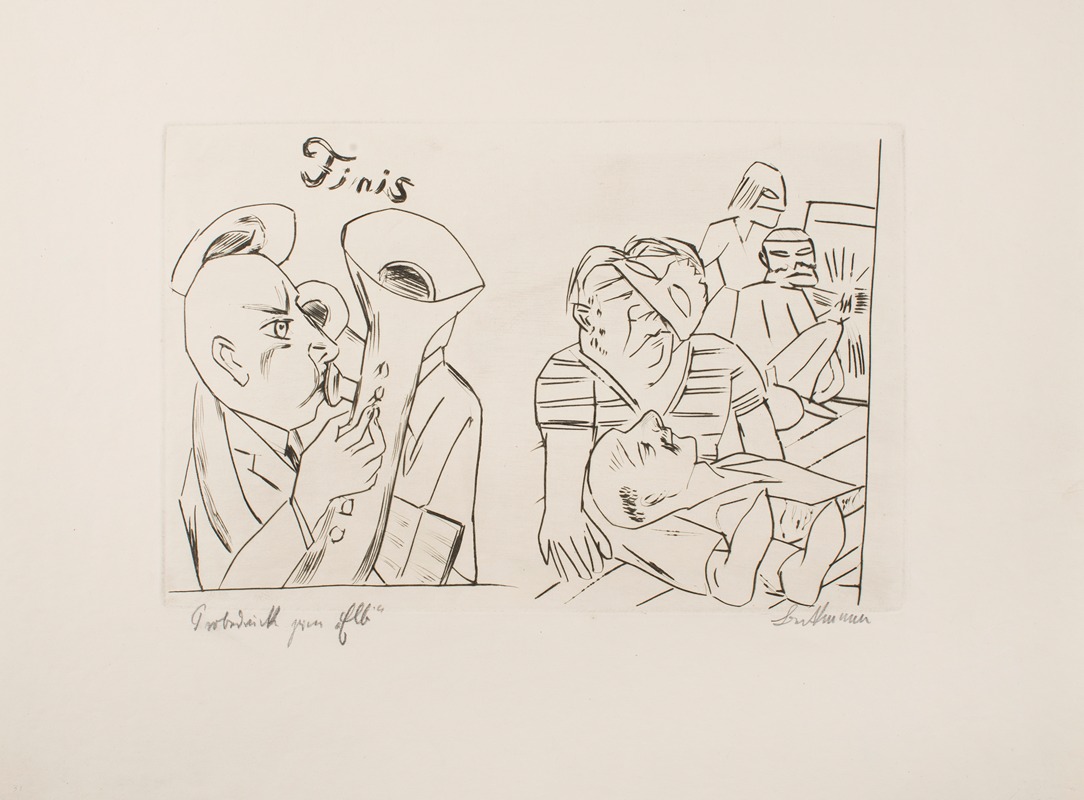
Ebbi; Illustrations for Act IV
A hand-painted replica of Max Beckmann’s masterpiece Ebbi; Illustrations for Act IV, meticulously crafted by professional artists to capture the true essence of the original. Each piece is created with museum-quality canvas and rare mineral pigments, carefully painted by experienced artists with delicate brushstrokes and rich, layered colors to perfectly recreate the texture of the original artwork. Unlike machine-printed reproductions, this hand-painted version brings the painting to life, infused with the artist’s emotions and skill in every stroke. Whether for personal collection or home decoration, it instantly elevates the artistic atmosphere of any space.
Max Beckmann, a prominent German painter and printmaker, is known for his distinctive style that combines elements of Expressionism and New Objectivity. One of his lesser-known works is "Ebbi; Illustrations for Act IV," which is part of a series of illustrations Beckmann created for a theatrical production. This piece reflects Beckmann's deep engagement with theater and his ability to capture the dramatic essence of the stage through visual art.
Max Beckmann was born in Leipzig, Germany, in 1884. He studied at the Weimar Academy of Arts and quickly became involved in the German Expressionist movement. However, Beckmann's work evolved over time, and he distanced himself from Expressionism, developing a more personal style that came to be associated with the New Objectivity movement. His art often explores themes of human suffering, existential dread, and the complexities of modern life, which are depicted through bold lines, vivid colors, and complex compositions.
The series to which "Ebbi; Illustrations for Act IV" belongs was created during a period when Beckmann was increasingly interested in the intersection of visual art and theater. Beckmann himself was an avid theater-goer and had a profound appreciation for the dramatic arts. This interest is evident in his work, which frequently includes theatrical motifs and characters that seem to be performing on a stage.
"Ebbi; Illustrations for Act IV" is characterized by Beckmann's typical use of strong, dynamic lines and a rich, dark palette. The composition likely captures a moment of high drama, reflecting the tension and emotion of the theatrical act it illustrates. Beckmann's ability to convey narrative through imagery is a testament to his skill as an artist and his deep understanding of both visual and performing arts.
Throughout his career, Beckmann faced significant challenges, particularly during the rise of the Nazi regime in Germany. His work was labeled "degenerate art" by the Nazis, and he was dismissed from his teaching position at the Städel School in Frankfurt. In 1937, Beckmann fled Germany and spent the next decade in Amsterdam before eventually moving to the United States in 1947. Despite these hardships, Beckmann continued to produce art that was both innovative and deeply personal.
Beckmann's legacy is marked by his unique ability to blend the personal with the universal, creating works that resonate with audiences on multiple levels. His exploration of the human condition, often through the lens of theater, remains a significant aspect of his oeuvre. "Ebbi; Illustrations for Act IV" is a part of this larger narrative, showcasing Beckmann's talent for capturing the essence of performance and his enduring fascination with the dramatic arts.
While specific details about the theatrical production for which "Ebbi; Illustrations for Act IV" was created are not widely documented, the work stands as a testament to Beckmann's artistic vision and his ability to transcend the boundaries between different art forms. Through his illustrations, Beckmann invites viewers to engage with the drama and emotion of the theater, offering a glimpse into the world of performance through his unique artistic lens.





